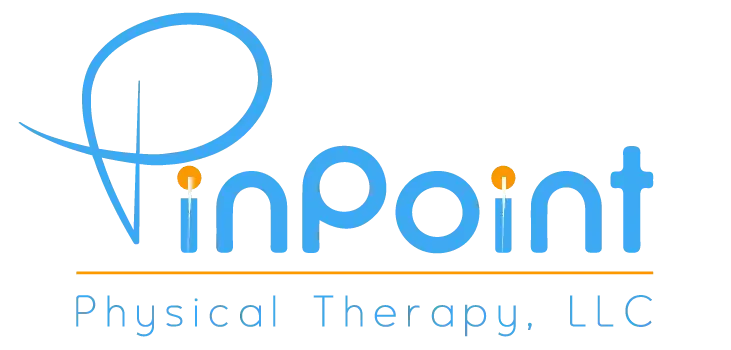Shockwave Therapy: A Revolutionary Approach to Pelvic Floor Health
Pelvic floor dysfunction in Charlotte NC is a common yet often overlooked issue that can significantly impact one’s quality of life. Affecting both men and women, conditions like pelvic pain, incontinence, erectile dysfunction, and pain with intercourse are frequently linked to the health of the pelvic floor muscles. Traditionally, treatment options have included pelvic floor physical therapy, medication, and surgery. However, a new, non-invasive therapy is gaining attention for its effectiveness: shockwave therapy.
Understanding the Pelvic Floor
The pelvic floor is a group of muscles and connective tissues that support the bladder, rectum, and, in women, the uterus. It is also the lower portion of our “core”. These muscles play a critical role in controlling urination, bowel movements, sexual function and stabilizing our spine. When the pelvic floor muscles become weakened or overly tight, various health issues can arise.
What is Shockwave Therapy?
Shockwave therapy, also known as extracorporeal shockwave therapy (ESWT), is a treatment that uses acoustic waves to deliver targeted mechanical energy to tissues including muscle, nerve, vessels, and joints. Originally developed to treat kidney stones, ESWT has been adapted for various musculoskeletal conditions and is now being used for pelvic floor disorders.
How Shockwave Therapy Works
Shockwave therapy involves the delivery of sound waves to the affected area using a handheld device. These waves stimulate blood flow, promote tissue regeneration, and reduce inflammation. For pelvic floor dysfunction, the therapy is typically administered externally, targeting the muscles and tissues surrounding the pelvic region. I may also be administered to adjacent areas where nerves and blood flow originate. In almost 3 decades of practicing physical therapy, I never had such a tool to address nerves and blood vessels. The physiological effects of shockwave continue for up to 3 months.
Benefits of Shockwave Therapy for Pelvic Floor Dysfunction
- Non-Invasive and Mostly Painless: Unlike surgical interventions, shockwave therapy is non-invasive and generally well-tolerated, with minimal discomfort during the procedure. 2. Improved Blood Flow: The acoustic waves enhance blood circulation and create new blood vessels in the pelvic region, which can accelerate healing and improve muscle function.
- Tissue Regeneration: Shockwave therapy promotes the regeneration of damaged tissues, helping to restore normal pelvic floor function.
- Modulates Inflammation: The treatment helps to modulate inflammation, which can alleviate pain and discomfort associated with pelvic floor dysfunction.
- Enhanced Muscle Function: By stimulating the muscles and nerves, shockwave therapy can help improve strength and coordination, aiding in the management of incontinence and sexual dysfunction.
Conditions Treated with Shockwave Therapy
Shockwave therapy is being used to treat a variety of pelvic floor-related conditions, including:
- Chronic Pelvic Pain Syndrome (CPPS): Often affecting men, CPPS can cause severe pelvic pain and discomfort. Shockwave therapy has shown promise in reducing pain and improving quality of life.
- Female Pelvic Pain: Women experiencing pelvic pain due to conditions like endometriosis, vulvodynia, or interstitial cystitis may benefit from the therapy. • Incontinence: Both stress incontinence (leakage during physical activity) and urge incontinence (sudden, intense urges to urinate) can be managed with shockwave therapy. • Sexual Dysfunction: Conditions such as erectile dysfunction in men and painful intercourse in women can be alleviated with improved pelvic floor function. • Hemorrhoids and anal fissures: Shockwave increases the blood flow which brings in healing chemicals including stem cells to help heal these tissues.
- There are many other conditions that can benefit from Shockwave. The Procedure
Shockwave therapy sessions typically last about 10-30 minutes and are conducted in a medical office. Most patients require multiple sessions over several weeks for optimal results. There is no downtime, and patients can usually resume their normal activities immediately after treatment.
Differences in Brands
There are many different brands of Shockwave that may or may not be delivering “shockwave”. Radial waves are not shockwaves, focused waves are not broadly focused waves. Some brands are not FDA cleared and some brands cause micro-trauma. You should discuss the brand with your provider so you can be assured the machine is safe and effective.
Conclusion
Shockwave therapy is emerging as a promising treatment for various pelvic floor disorders, offering a non-invasive, effective option for those suffering from chronic pain, incontinence, and sexual dysfunction. If you are experiencing pelvic floor issues, consult with a healthcare provider to determine if shockwave therapy might be right for you.
By exploring innovative treatments like shockwave therapy, we can improve the quality of life for those affected by pelvic floor dysfunction and pave the way for a future with fewer invasive procedures and more effective, non-invasive solutions.
#pelvicfloor #pelvicpain #pelvicfloorphysicaltherapy #incontinence #painwithintercourse #softwave #shockwave #physicaltherapycharlottenc #physicalltherapysouthpark #sexualdysfunction



